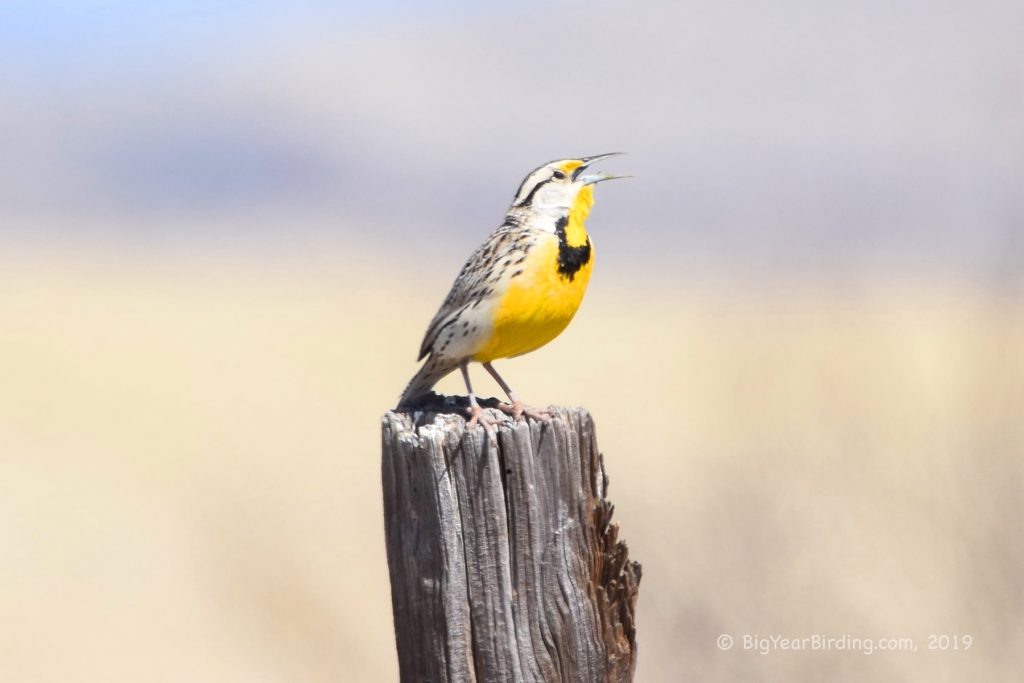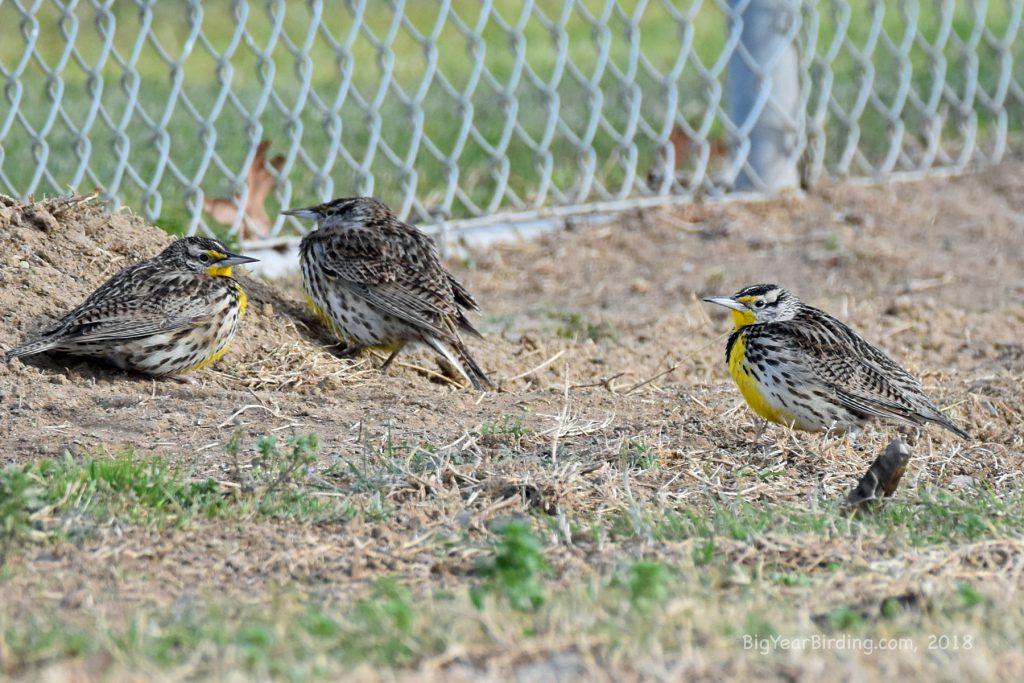
The Western Meadowlark (Sturnella neglecta) is a medium-sized bird that belongs to the family Icteridae. It measures around 8.5 to 11 inches (21 to 28 centimeters) in length and weighs approximately 3.5 to 5 ounces (100 to 140 grams). The Western Meadowlark is slightly smaller than the Eastern Meadowlark, which is its close relative.
The Western Meadowlark has several distinguishing field marks that make it easy to identify. It has a yellow breast with a black V-shaped collar that extends down to the belly. Its upperparts are brown with black and white streaks, and it has a long, pointed bill. The bird’s wings are brown with a white patch, and its tail is short and rounded. The Western Meadowlark also has a distinct, flute-like song that is easily recognizable.
The Western Meadowlark is a resident bird that is found in western North America throughout the year. However, some populations of the bird may migrate in the winter to more southern areas. These birds are mainly found in grasslands, meadows, and prairies. They prefer areas with tall grasses that provide cover and nesting sites.
During the breeding season, the Western Meadowlark is monogamous, and the pair builds a nest on the ground in a small depression lined with grasses and other plant material. The female lays around four to six eggs, which she incubates for around two weeks. The young birds leave the nest after around ten days and are independent after around two weeks.
 Overall, the Western Meadowlark is a beautiful bird that is easily recognizable by its distinctive field marks and song. This bird is an important part of the grassland ecosystem, where it feeds on insects and seeds, and it provides food for predators such as hawks and eagles. The Western Meadowlark is also a symbol of many western states in the United States, where it is often featured on state flags and emblems.
Overall, the Western Meadowlark is a beautiful bird that is easily recognizable by its distinctive field marks and song. This bird is an important part of the grassland ecosystem, where it feeds on insects and seeds, and it provides food for predators such as hawks and eagles. The Western Meadowlark is also a symbol of many western states in the United States, where it is often featured on state flags and emblems.
